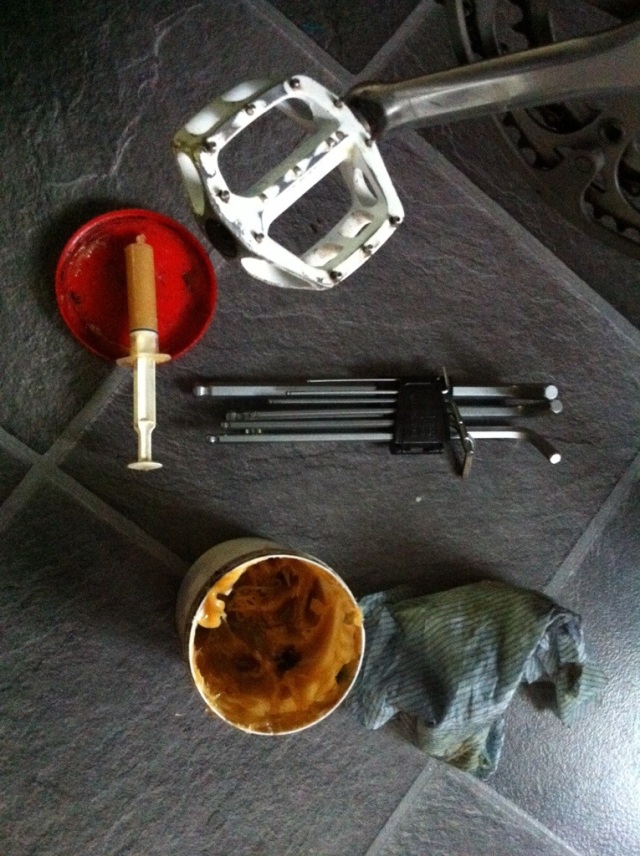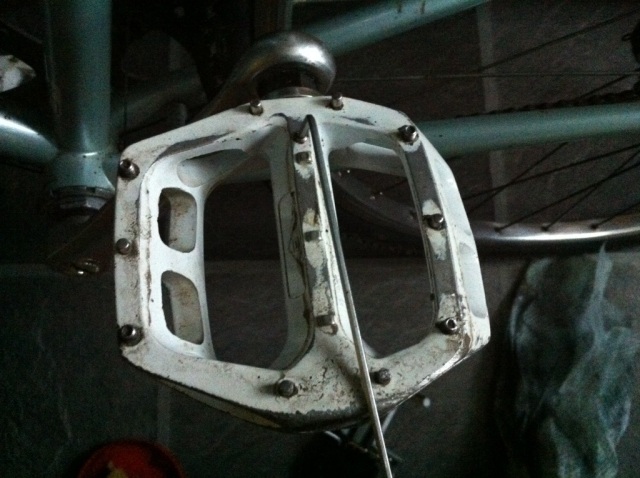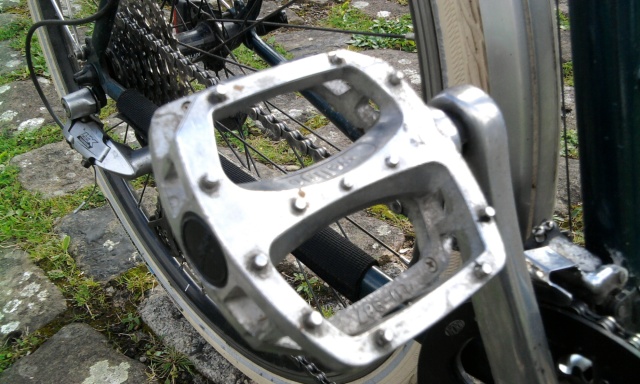DMR’s V8 pedals are, in my opinion, the best non-clippy pedal out there for a number of reasons. Sure you can buy more expensive flat pedals, lighter flat pedals, flat pedals made of magnesium, unobtanium, kryponite.
But in terms of bang for buck, real world performance, comfort, grip etc, they can’t be beaten. And one more thing makes them special to a retrogrouch like me; grease ports.
Yes, grease ports folks.
Back in the day, cars, motorbikes, steam engines, warships, traction engines and so on all had grease ports, oil ports or the wonderfully titled grease nipple.
These wonderful devices were present on hubs, gearboxes, bushings, suspension arms, you name it. If it needed periodic lubrication then by god it got a grease port.
Sturmey Archer hubs used to have an oil port. Every so often the sports jacket attired owner would pop open the oil port on his venerable Raleigh Sports and glug in a few drops of 10w40 motor oil from a corporation green oil can and he’d be assured trouble-free gear operation for another few years.
However, as time wore on the notion of user serviceability took a nose dive and most folk seem happy, nay hell bent, on discarding and replacing items which begin to perform ‘sub optimally’.
Which is why I was filled with unbridled joy today as I gave my Peugeot’s DMRs their regular service.
They were getting a little dry and graunchy sounding as they spun. With a normal pedal this would mean a fiddlesome rebuild but DMR have been thoughtful enough to add grease ports to the V8, meaning that the user can regularly expunge the old manky grease and dirt and replace it with fresh stuff with nary a flicker of the spanners.
The process is simple. Using an Allen key, remove the grub screw to reveal the port. Next fill the supplied syringe with any decent grease. I use Castrol automotive grease, mainly because I’ve got a large pot of it that I bought in 1999 and that if it works on cars then it’ll probably be just fine on bikes.
Anyway, I digress.
Press the tip of the syringe into the grease port and squeeze in the grease until the old dirty stuff comes out of the bearing at one end or the end cap at t’other.
Clean up any excess grease, replace the grub screw and enjoy the silky smooth action of your grippy parallelogram pedals once more.
Now don’t you just wish all the bearings on your bike were as easy to service?
NB: you can do this with other pedals too. I drilled out a hole in the end cap of my Wellgo pedals and injected them with fresh grease and the effect was much the same.
NB2: I used a medicine syringe – it holds more grease than the one supplied with the pedals. Plus the dinky DMR syringe broke immediately in my clumsy hands.




